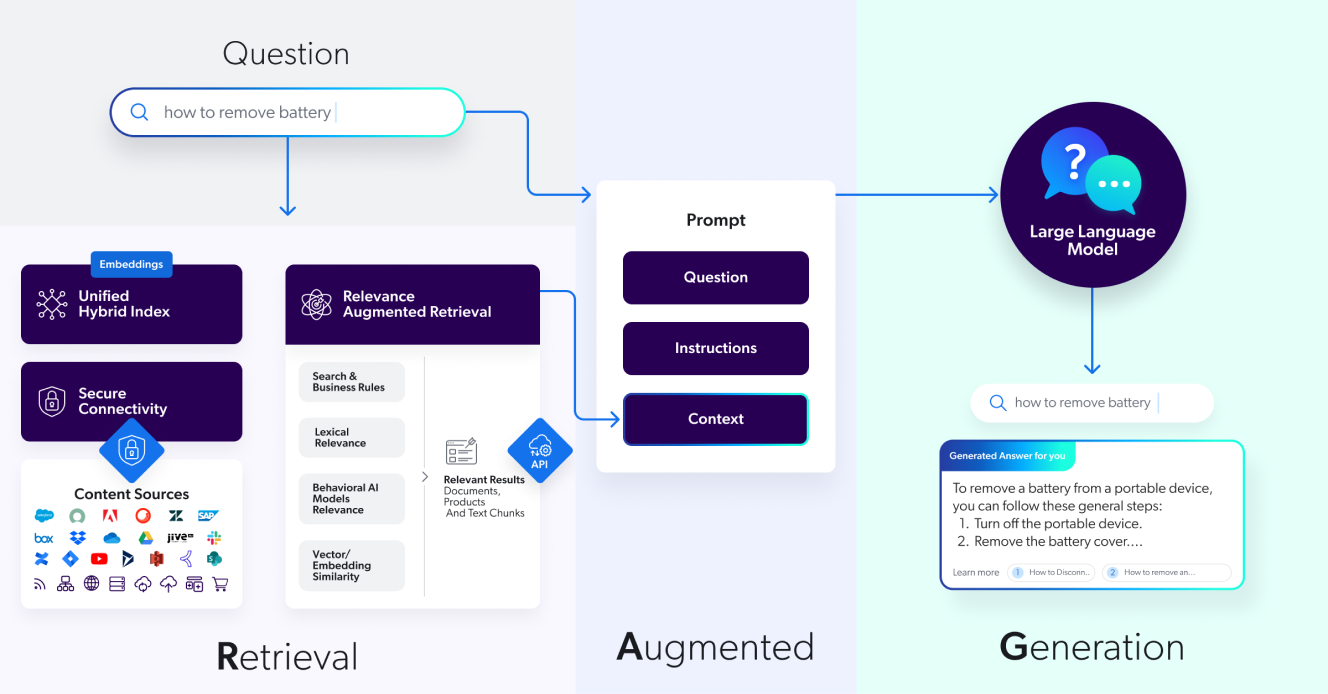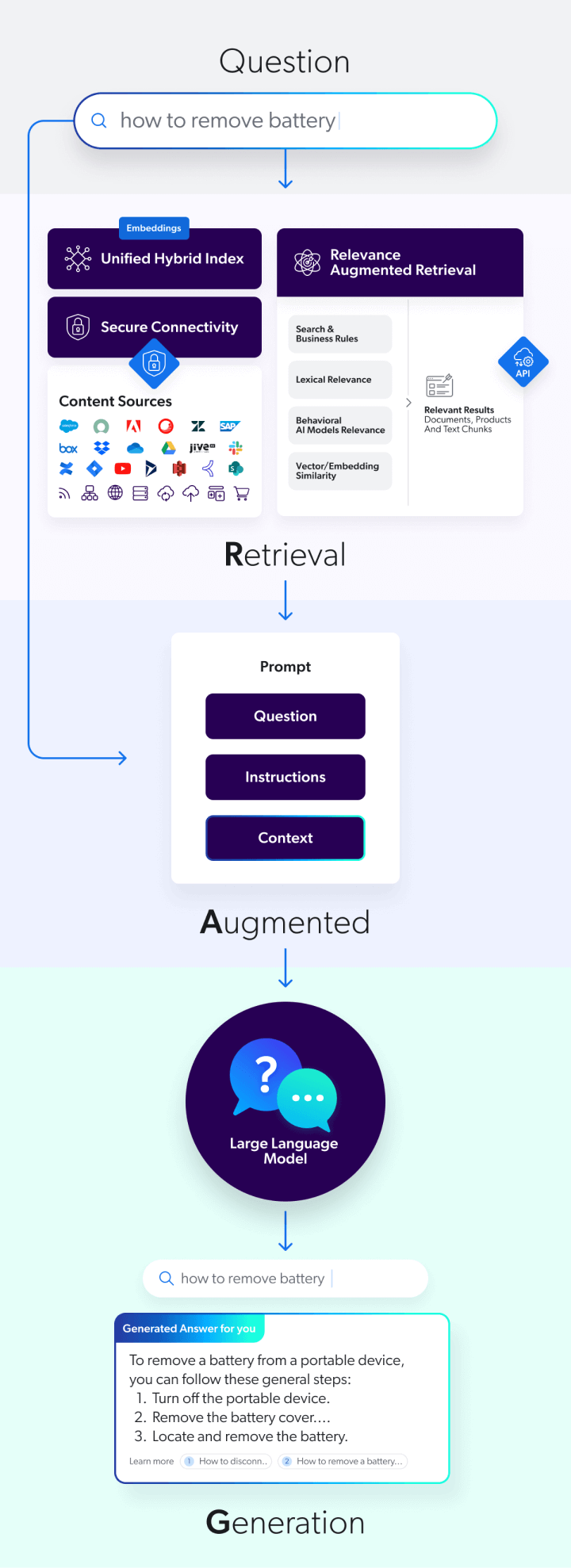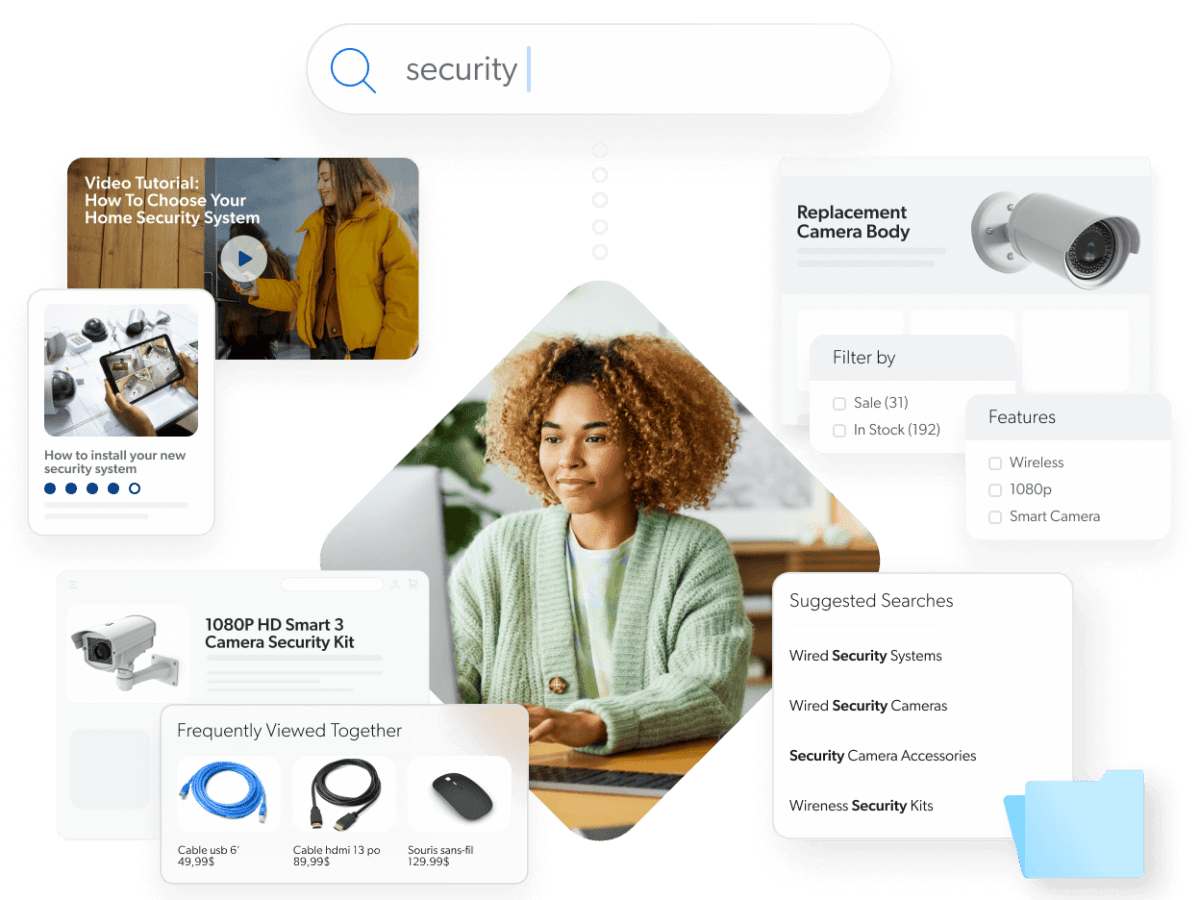

Information retrieval is the process of obtaining relevant information from a collection of resources, such as documents, in the form of unstructured or semi-structured data. Great retrieval supports passage identification for tools like generative AI.
Information retrieval systems (or IR system), commonly referred to as search platforms, provide an interface between users and the information in data repositories. They allow us to make sense of the vast amounts of information we encounter daily. We encounter IR systems in the form of web search engines, virtual assistants, and sorting emails.

Let’s take a look at the most common techniques in use today for information retrieval, their strengths and limitations, and real-world applications. Information retrieval systems often utilize a combination of these techniques to improve accuracy and efficiency.
To look at content across your enterprise with information retrieval, you need to connect into data sources. And that’s done through connectors, which enables you to plug into a content source using a crawler or push mechanism.
A crawler crawls through all connected sources to extract data, regardless of whether that data is structured or unstructured.
A Push API exposes services that allow you to push items and their permission models into a source, and security identities into a security identity provider, rather than letting standard Coveo crawlers pull this content.
Information retrieval ranking can be as simple as looking at how many times a given query or keyword appears in the retrieved data. More sophisticated ranking requires creating a relevancy score based on numerous factors, and then displaying these results in descending order.
Machine Learning
To meet modern expectations, information retrieval systems should use artificial intelligence and machine learning to map the content so that the machine knows that a PDF about, say, “unified search,” is similar to a document on “index-time merging.” This enhances search results so the most relevant content always rises to the top.
Coveo’s machine learning models include:Role-based Access Controls
It is vital that a unified index must be able to understand the permissions a user has to access information. Modern enterprise search software uses access controls to enforce security policies on each enterprise user, to ensure security compliance within the search experience.
User Intent
By capturing on every user’s action, modern information retrieval platforms can determine intent. Through also taking into account personal data (including geo-location), the platform can match a query to mapped content and retrieve the most .
Machine learning and deep learning algorithms have enabled a new level of relevance analytics for each information retrieval platform user. Each result is uniquely tailored to individual users.
Equally, information retrieval capabilities are put to use for external-facing applications such as web search and app search. An information retrieval platform should support all these use cases, internally and externally to the enterprise.
Headless
With information needing to be accessible from an ever-growing number of devices, a headless framework gives you ultimate control and flexibility over your information retrieval interface. The Coveo Platform acts as a middle-layer for applications, opening a line of communication between the UI elements and your index. I
Information Retrieval-as-a-Service
The Coveo Platform is an enterprise-class, multi-tenant SaaS/PaaS solution that provides a unified, scalable, and secure way to search for contextually relevant content across many enterprise systems
How Do I Determine the Best Information Retrieval System?
Industry analysts regularly rank information retrieval vendors. Gartner has their Insight Engine category, while Forrester refers to it as Cognitive Search.
Unlike Elastic Enterprise Search, Solr, Amazon OpenSearch, or even Amazon Kendra, which require developers to build an information retrieval experience from scratch, the Coveo Platform includes hosted search page templates to get started right away. You can quickly see what a typical information retrieval result will look like for a user.